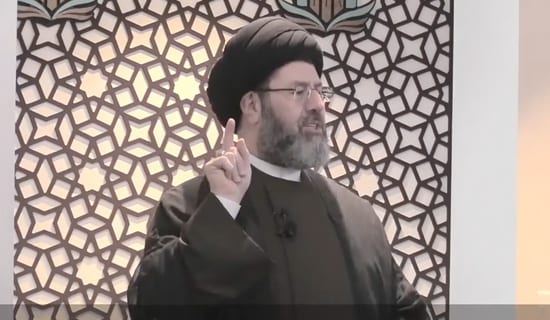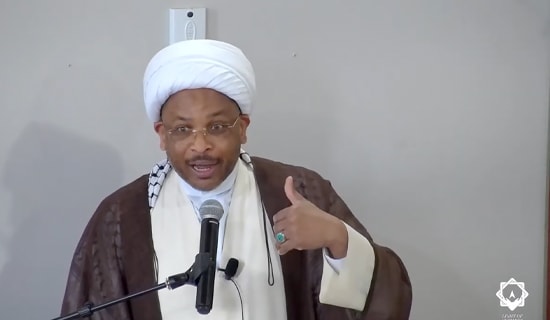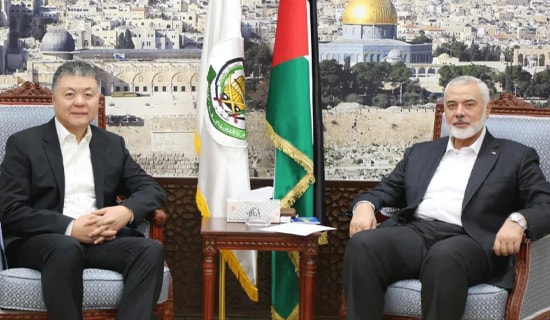This report was first published on the MEMRI Economic Blog on August 14, 2007. Please see www.memrieconomicblog.org.
Introduction
The massive increase in oil revenues in most of the six members of the Gulf Cooperation Council (GCC) – Saudi Arabia, United Arab Emirates, Qatar, Bahrain, Oman and Kuwait – has created unprecedented opportunities for the building of infrastructure, the provision of social services and, at the same time, for investments overseas.
These investments have been channeled through two principal pipelines – acquisition of assets and the purchase of shares in high quality financial and industrial firms. According to the London daily Al-Sharq Al-Awsat of August 13, the Gulf countries have channeled $140 billion for overseas investments in the last three years. In a relatively short time, some of the Gulf countries have become respectable actors on the international financial scene.
At the same time, a hospitable investment environment, the privatization of state-owned entities, and the prospects of mutually profitable deals have attracted a massive influx of Western financial services and industry to the Gulf region. The opening of the real estate market for foreign investors, particularly in Dubai, has created a massive construction boom which is fueling economic growth at a rapid rate.
The purpose of this article is to shed light on the investment activities of Dubai, and on how an enlightened and entrepreneurial leadership has turned what was a small desert outpost just a few decades ago into a bustling metropolis with a vigorous economy that is subject to both envy and emulation.
Increased Investment Power
Economies in the Middle East and North Africa [MENA] in general have grown by more than 5% in each of the last three years on account of substantial oil revenues. As the main suppliers of oil in the region, the Gulf countries – and, chiefly among them, the United Arab Emirates [UAE] – have experienced unprecedented levels of growth.
In contrast to the earlier oil booms of the 1970s and 1980s, however, these countries are not squandering their oil revenues on spending sprees, but rather are focusing on diversifying their assets and buttressing their fiscal solvency through massive investment schemes.
Dubai, one of the seven emirates that make up the UAE, in particular, exemplifies the investment trends of the Middle East, mostly on account of the fact that it is an investment powerhouse out of necessity. The emirate seeks to open itself to and extend its reach within international markets in order to hedge any risk it faces due to the steady decline of its oil and gas reserves, which are expected to reach depletion within twenty years. Dubai currently has a strong penchant for the real-estate sector, but is learning to thoroughly diversify its assets in its search for some high-yielding financial instruments.
Large current account surpluses have allowed much of this investment to take place through sovereign funds, which, in the past, were traditionally held only to protect domestic currencies and banks. Sovereign fund investment is a trend not limited to Gulf countries; the global total of sovereign funds[1] may be $2.5 trillion by the end of this year, and could reach $12 trillion by 2015 on account of capital appreciation.[2] Sovereign wealth funds may soon become the most important buyers of stocks and bonds, and oil countries account for about two-thirds of such assets globally.
[www.memrieconomicblog.org will soon present a more detailed discussion of sovereign fund investment and some possible complications of their proliferation.]
Attracting Western Industries
The current generation of economic and industry ministers in the Gulf region is largely composed of men who began their careers in the private sector. This correlates with efforts in almost all MENA countries to increase the privatization of state-owned entities in an attempt to create an "open market" atmosphere. As the Middle East daily Al-Sharq Al-Awsat reported on August 8, 2007, an international investment firm in Kuwait noted that privatization trends in Gulf countries – which are competing amongst themselves to become the next global "financial capitol" – are reflected in the flow of private capital into publicly traded stocks and other financial instruments. In 2006 this amount totaled $7.07 billion, which was a 61.6% increase over the previous year.
As regional investment levels skyrocket, from both private and public sources, local private investment funds are scrambling to attain access to European and American markets so that shareholders can enjoy even higher returns on their assets. In the end, this has pulled many Western services and industries, attracted to the copious amount of funds that proximity to potential investors can yield, into the Gulf region.
The Carlyle Group LP says that the Middle East is now the “hot spot” for private equity deals, and HSBC reports that as much as one third of all project finance involves Middle Eastern projects.[3] Dubai is a particular hub of this activity. The chief executive of oil services company Halliburton has recently opted to relocate at least part of the company’s corporate and executive headquarters from Houston to Dubai. Other prospective buyers of property in the emirate include Oracle, Cisco and Microsoft.[4]
Indeed, Dubai has made itself fertile ground for a Western economic presence with its free trade zones, in which companies are not held to the standard UAE requirement that all entities be majority-owned by a UAE national. Various information technology firms, investment banks and media corporations have holed themselves up in these territories, and officials expect finance alone to quadruple its contribution to the emirate’s GDP to $15 billion by 2015.[5]
Low tariffs, low currency risk, the absence of restrictions on repatriation of profits, a small national bureaucracy, and UAE laws that forbid corporate and sales taxes helped the number of Greenfield projects [certain types of investment ventures] within Dubai alone to rise from 88 in 2002 to 215 in 2005. As such, non-oil growth has average 10.6% annually over the past five years. [6] In turn, state-oriented investment facilities such as Dubai International Capital, Istithmar [investment holding company] and DIFC Investments have taken stakes in HSBC, Standard Chartered Bank, Blackstone [private equity fund] and Deutsche Bank.
SUPPORT OUR WORK

Qatar is following in Dubai’s footsteps, announcing on July 16, 2007 the unification of its regulatory system, and its intention to rewrite outdated legal codes for commercial and financial transactions that may act as barriers to entry for international firms.
On a smaller scale, many US companies are moving into the region to bolster the sugar industry, which has had to quickly develop after the World Trade Organization capped exports of sugar from the EU in July 2006. With the Gulf’s large number of transport vessels, it is a magnet for much of the half-billion dollars being invested in sugar output production.
A Mastercard survey also indicated that consumer confidence in the region is at an all time high, and so spending is soaring in Kuwait, Saudi Arabia, Qatar and the UAE. Owing to this and the decline of the dollar, to which all of the Gulf currencies are pegged with the exception of Kuwait’s, some American products are getting a boost. For instance, June was the best month for General Motors in the Persian Gulf because its cars were enjoying an advantage over Japanese and European cars.[7] If the spending trend continues, other Western manufacturing may be pulled into the Gulf’s orbit
Expanding Horizons
While Western banking, financial, and information technology industries are rapidly being drawn to the Gulf countries, Gulf investment is not necessarily giving preferential treatment to the Western hemisphere that has largely responsible for its explosion of financial power.
While it is true that various emirate companies invested $3.5 billion in the US last year,[8] many of those same companies are also shifting their interest to Asian markets on account of the falling dollar and for the sake of diversification:
- Dubai International Capital and DIFC Investments are working to extend their reach into Pakistan, India and South Korea.
- Istithmar’s real estate arm, which is part of the Dubai World group of companies, plans to increase the 5% of its assets it has invested in Asia to 30% within five years.[9]
- The Dubai government firm Emaar is responsible for the housing boom taking place across Asia, most recently securing a deal to construct a 1,200-hectare project, set on the pristine Mandalika Beach, estimated at $600 million in worth.[10]
- Remaining oil exports in the Dubai are being used to help launch the Dubai Mercantile Exchange, a joint venture with Nymex that is to create a futures market for Mideast crude oil exported to Asia.
- Dubai Ports World, in its attempt to double its capacity in 10 years, is developing terminals in China, India, Vietnam and Pakistan.
There has also been a trend of increased cross-border investment within the Gulf and larger MENA regions. Part of the reason behind this trend is a post-9/11 sentiment in the Arab world that the West, and especially the US, is unwelcoming of Arab investment. This fear did not seem entirely unfounded in 2006, when the U.S. House of Representatives passed legislation forbidding Dubai Ports World from gaining operations of ports in major American cities, citing that al-Qaeda funding had passed through UAE banks, albeit unbeknownst to the government, prior to 9/11. [This caused a showdown between Congress and the White House, which supported the deal, and much controversy ensued.]
As an example, construction company Emaar’s most recent press releases discuss not Western development, but a $500 million deal to build Samara Dead Sea Golf and Beach resort in Jordan, and a memorandum of understanding with a Saudi energy company on plans for the construction of an open-cycle gas turbine power plant for King Abdullah Economic City in Saudi Arabia.
Mergers and Acquisitions
Arabic satellite television has allowed Gulf companies to develop strong regional brands, and then take their business to a global level. The substantial revenues produced by this trend have enabled more mergers and acquisitions to take place. For example, Qatar Telecommunications Co. paid $3.7 billion for a 51% stake in Kuwait’s National Mobile Telecommunications Co., while Abraaj Capital, the MENA’s largest private equity firm, paid around $1.4 billion for Egypt’s largest private sector fertilizer manufacturer.[11]
The Gulf’s stepped up trans-shipment and trading hub status means that it is also increasing its trading links with Iran. Each year, chemicals, oil production equipment, and computer technology enter into Iran via the UAE, which, in theory, assists Iran in its quest to develop its industry and become more economically autonomous. The US also suspects that some equipment transshipped through Dubai ports may have been used by Iran for its nuclear program.
Conclusion
These investment patterns place the Gulf region, and especially the UAE, in a unique position. As relationships increase in number and depth within certain markets, namely Iran and China, diplomatic ties with Washington and Europe will probably occasionally feel a squeeze.
Sovereign wealth funds are set to grow in the short and medium-term at least, and as they do so it is inevitable that the economic sway held by Gulf countries, by nature of their voracious appetite for foreign investment, will increase dramatically. Of course, there will be repercussions to this new scheme of sovereign investment. But one should expect Western industries, especially financial services, to continue to converge upon and cater to the burgeoning market of the Gulf. At the same time, Asian markets – especially real-estate sectors – will be able to count on continued attention from the oil producing asset powerhouses.
* Bianca Gersten is a researcher at www.memrieconomicblog.org.
[1] Countries with the top-ten largest sovereign wealth funds include, in descending order: UAE, Singapore, Norway, Saudi Arabia, China, Kuwait, Australia, United States, Qatar and Russia.
[2] The Economist, "Sovereign-wealth funds: The world’s most expensive club," May 26, 2007.
[3] The Wall Street Journal, "Boom in Investment Powers Mideast Growth," July 19, 2007.
[4] Financial Times, "Drilling minds: Dubai’s ruler has big ideas for his little city-state," May 4, 2007.
[5] Financial Times, "Emirate sets its sights on trebled GDP by 2015," July 24, 2007.
[6] The Middle East, "The Success Story Surges Onwards and Upwards," June, 2007.
[7] al-Riyadh, Saudi Arabia, August 7, 2007.
[8] Financial Times, "Drilling minds: Dubai’s ruler has big ideas for his little city-state," May 4, 2007.
[9] Financial Times, "'Bubble economy' defies gravity," July 24, 2007.
[10] Asia Property Report, "Lombok lifted by Emaar project," July 23, 2007.
[11] The Wall Street Journal, "Boom in Investment Powers Mideast Growth," July 19, 2007.




